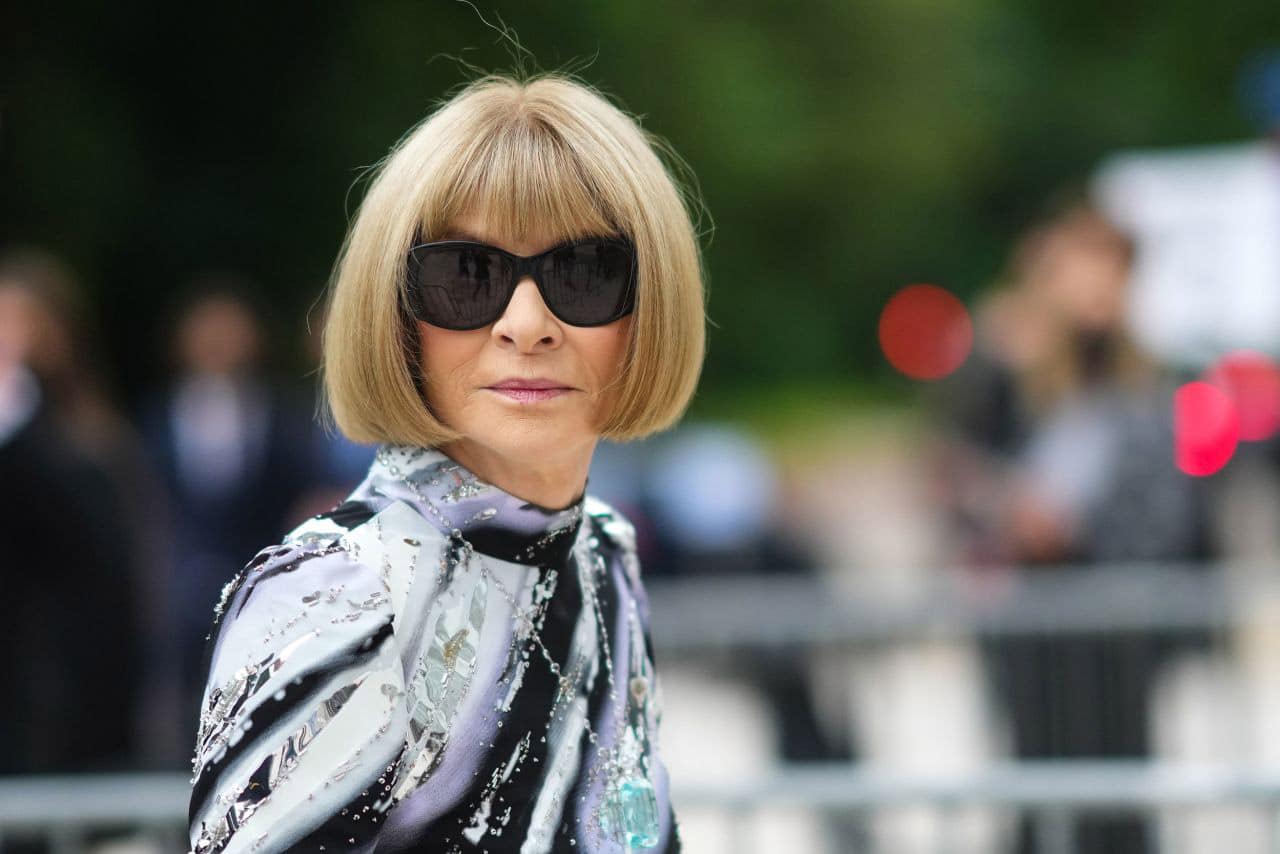As American Vogue releases its hotly anticipated September Issue, NIKI CHARALAMBOUS looks at its driving force
When it comes to influential figures in the fashion world, there is no doubt that Anna Wintour is among the most visible and vocal personalities, having significantly shaped the industry’s narrative and predicting trends before they happen. As editor-in-chief of American Vogue, Wintour has become known for her signature pageboy bob, Chanel sunglasses, and Manolo Blahnik sandals, often coming across as harsh – a disposition she identifies as striving for the best.
However, in her three-decade career, the often lionised and satirised, yet revered and feared media executive has led Vogue to become one of the world’s most iconic fashion magazines, showcasing high-profile celebrities, designers and cultural influencers. She has also helped several designers, stylists and photographers establish their careers in the industry.
Her definitive biography, Anna Wintour: The Biography, penned by Amy Odell, recounts the arduous climb of an ambitious young woman who would become one of the world’s most influential individuals with a singular and legendary focus.
Odell’s book is an intimate look into Wintour’s fashion kingdom, creating a portrayal of a woman who utilised her enormous abilities to accumulate extraordinary, and long-lasting power and influence.

With the Queen
Wintour was one of four siblings born in London in 1949 to a British father and an American mother. Surprisingly, when asked at the age of ten what she wanted to be when she grew up, Wintour replied she wanted to be the editor-in-chief of Vogue magazine. “I was lucky to grow up in a house full of journalists,” she mentioned in an interview. “My father was the editor of the London Evening Standard, and he would regularly come to me for advice on how to make the newspaper more appealing to young people.”
Wintour often acknowledges her father for the great influence he had on her career, particularly in how she handles people and hires employees. “My father believed in the cult of personality, and I always look for people with strong character traits to join my team, especially those who can disagree.”
In 1966, Wintour began a training programme at Harrods, but she left after only a few months, arguing that “you either know fashion or you don’t.” She tried many editorial jobs during her formative years, including working as an editorial assistant at Harper’s Bazaar, which set the groundwork for a career in fashion journalism.
After relocating to New York and working as a junior fashion editor for Harper’s Bazaar US for only a few months, Wintour was fired for reasons that her photo shoots were too controversial, although she claims that she was “too European for the role.”
While working for multiple publications and changing jobs regularly, Wintour eventually settled on a position as the fashion editor of New York magazine, where she acquired a reputation for her unique approach to fashion spreads, photo shoots and fashion inventiveness. Wintour started using celebrities on the cover of the magazine, recognising the positive impact it would have on marketing and sales. Her contributions to the publication resulted in a significant increase in circulation, and her success was recognised throughout the fashion industry.

In 1988, Anna Wintour returned to the US and took over as editor-in-chief of American Vogue and has retained the position ever since. During her tenure, Wintour has revolutionised the game for fashion editorial, offering novel concepts to millions of readers around the world.
Refusing to be distracted by negative feedback and hate-based interactions, she has also been the driving force behind the annual Met Gala, which has transformed from a well-attended dinner for museum donors and patrons into one of New York’s largest fund-raising events.
Her vision for the fashion industry is also reflected in the pages of American Vogue’s September Issue, the must-have accessory for all fashion enthusiasts, as Wintour ups her game each year to provide an aesthetic proposal that will govern the fashion industry for the following 12 months.
This year’s issue features four legendary supermodels, Christy Turlington, Naomi Campbell, Linda Evangelista and Cindy Crawford, and it coincides with Apple TV+’s upcoming four-part series The Super Models, which premieres on September 20.
The documentary will shine the spotlight on the careers of these former models, all of whom became cultural icons in the 1990s. While they may not be as widely recognised as they once were, the one constant figure who will still be sitting in the front row at this month’s fashion shows in London, Paris, Milan and New York will be the timeless Anna Wintour, judging the collections while the fashion world awaits further direction.







Click here to change your cookie preferences